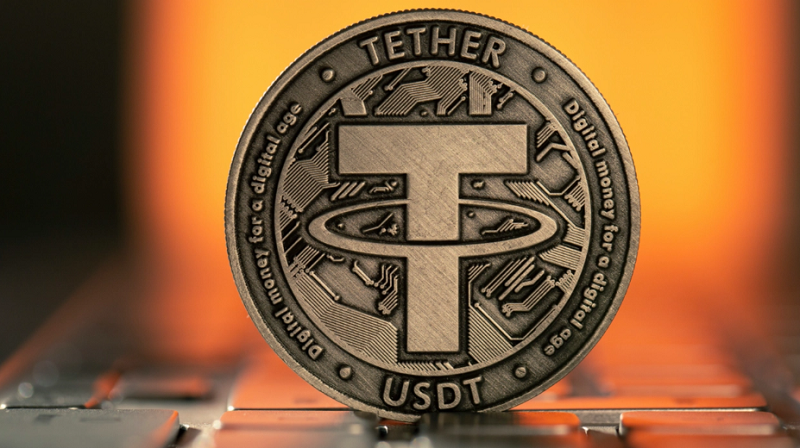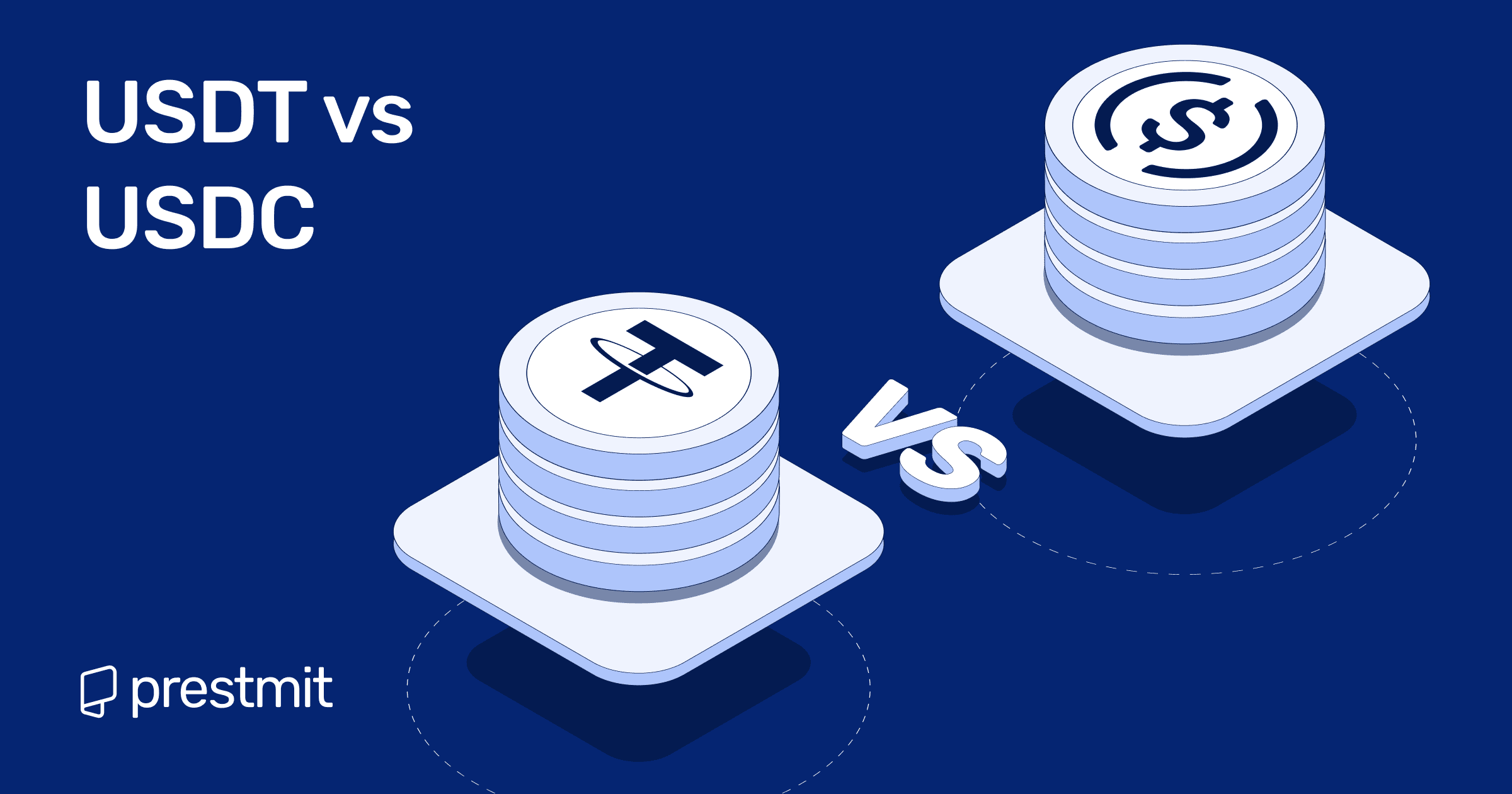Table of Contents
The world of cryptocurrency is often associated with volatility. Prices can swing wildly within hours, making it difficult for traders and everyday users to maintain stability in their digital wallets. This is where stablecoins come in—cryptocurrencies designed to maintain a stable value by pegging to assets like the U.S. dollar.
Two of the most widely used stablecoins today are Tether (USDT) and USD Coin (USDC). At first glance, they may look similar: both are pegged 1:1 to the U.S. dollar, both are used across exchanges and DeFi platforms, and both serve as safe havens during crypto market fluctuations. But dig deeper, and you’ll discover differences in transparency, adoption, regulation, and trustworthiness.
This article explores the similarities and differences between USDT and USDC to help you decide which stablecoin is right for you.
What is USDT?

USDT is a type of stablecoin that is designed to maintain a fixed value. By “fixed value”, we simply mean that it’s pegged 1:1 to the US Dollar which means that 1 USDT is equal to $1.
USDT was launched in 2014 by a group of entrepreneurs: Brock Pierce, Reeve Collins, and Craig Sellars. It started under the name Realcoin before being rebranded as Tether later that year.
The project was designed to bridge the gap between traditional fiat currencies and cryptocurrencies, giving traders a way to move digital dollars on the blockchain while avoiding volatility.
Today, it is backed by reserves such as cash and other financial assets and is widely used in the crypto ecosystem for trading, remittances, and transferring value across exchanges without exposure to price swings.
What is USDC?

USDC is a type of stablecoin whose value is intended to stay equal to one US dollar. It is issued by Circle and designed to give you a digital, blockchain-native dollar that you can use for trading, payments, DeFi, and cross-border transfers.
The stablecoin was announced in 2018 by the Centre consortium, a collaboration co-founded by Circle and Coinbase. It was launched later that year to offer a transparent, fully-backed dollar alternative for crypto markets.
USDC is backed primarily by cash and short-term U.S. government securities, especially U.S. Treasury bills. Circle, the company that issues USDC, maintains reserves that are meant to match the total supply of USDC in circulation.
This means for every USDC token created, there should be an equivalent value held in safe, highly liquid assets. The goal of this structure is to ensure that you can redeem your USDC tokens for U.S. dollars at any time, keeping the token stable at 1:1 with the dollar.
USDT vs USDC: What is the Difference?
Here are the major differences between USDT and USDC:
1. Reserve Composition and Transparency
USDT has been criticized for its lack of transparency regarding the assets backing its tokens. While Tether claims that USDT is fully backed by reserves, it has faced legal challenges and regulatory scrutiny over its reserve practices.
USDC, on the other hand, is backed primarily by cash and short-term U.S. Treasury securities. Circle provides monthly third-party attestations of its reserves, offering greater transparency and assurance to users and regulators.
2. Market Capitalization and Liquidity
USDT is the largest stablecoin by market capitalization, holding a dominant position in the market. Its widespread adoption across various exchanges and platforms contributes to its high liquidity.
Meanwhile, USDC has a smaller market capitalization compared to USDT but has been growing steadily. Its focus on transparency and regulatory compliance has attracted institutional investors and DeFi platforms, increasing its adoption.
3. Regulatory Compliance and Legal Standing
USDT has faced legal challenges and regulatory scrutiny in various jurisdictions. Concerns about its reserve practices and transparency have led to investigations by regulatory bodies.
Hpwever, USDC is considered more compliant with regulatory standards. Circle’s commitment to transparency and regular audits has helped it maintain a positive relationship with regulators and has positioned USDC as a more trusted stablecoin in the market.
4. Adoption and Use Cases
USDT is widely used for trading and liquidity provision across various cryptocurrency exchanges. Its high liquidity and widespread acceptance make it a preferred choice for traders seeking to move funds quickly between different assets.
Meanwhile, USDC is highly preferred in decentralized finance (DeFi) applications, lending platforms, and as a means of remittance. Its transparency and regulatory compliance make it attractive to institutional investors and users seeking a more secure and compliant stablecoin option.
Which Should You Choose Between USDT and USDC?
Deciding on which to go for between USDT and USDC actually depends on what matters most to you in terms of transparency, stability, and use case.
USDC, issued by Circle and Coinbase, is known for its transparency. It regularly publishes attestations from reputable accounting firms showing that it is fully backed by reserves. This makes it widely trusted in the crypto community.
USDT, on the other hand, is issued by Tether and has faced regulatory scrutiny in the past for not fully disclosing its reserves. While it claims to be fully backed now, crypto enthusiasts and investors are still skeptical about that.
When it comes to liquidity and adoption, USDT is the most widely used stablecoin, especially on exchanges. Its high liquidity makes it the go-to choice for trading and fast transactions.
USDC is slightly less widespread but is growing rapidly, particularly in decentralized finance platforms and regulated markets where compliance and transparency are important.
Your choice should also depend on your intended use. If your focus is trading or quick exchanges, USDT is generally the better option because of its wide availability on crypto exchanges.
For long-term holding, participation in DeFi, or use in regulated environments, USDC is preferable because of its better transparency and regulatory compliance.
In terms of risk, USDT carries slightly higher risk due to a lack of transparency in the past and regulatory concerns. USDC has lower risk, which makes it more suitable for you if you’re a conservative investor who prioritizes security and clear backing of your funds.
At the end of the day, your choice should come down to your priorities and comfort level. Take the time to compare these options carefully and select the one that aligns best with your financial needs and goals.
Frequently Asked Questions (FAQs) on USDT vs USDC
Which Stablecoin is More Widely Accepted Between USDT and USDC?
USDT is the more widely accepted stablecoin globally, offering deep liquidity and broad support across exchanges and platforms. Its extensive adoption makes it ideal for traders seeking seamless transactions and access to various crypto markets.
Which Stablecoin Offers Better Transparency Between USDT and USDC?
USDC provides better transparency through regular third-party attestations and compliance with regulatory standards. This commitment to transparency makes it a preferred choice for users prioritizing regulatory compliance and trustworthiness in their stablecoin transactions.
Which Stablecoin is Better for Decentralized Finance (DeFi)?
USDC is better and widely used for DeFi applications due to its transparency and regulatory compliance. Its adoption in the DeFi space ensures users can participate in lending, staking, and liquidity provision with confidence.
Which Stablecoin is Safer to Use?
USDC is safer than USDT due to its commitment to transparency and regulatory compliance. Its regular audits and adherence to regulatory standards provide users with greater assurance regarding the stability and security of their holdings.
Conclusion
USDT and USDC are both solid stablecoins that have proven their value in the crypto market over the years. But choosing the right one isn’t just about popularity or market size. Focus on your needs, your risk comfort, and how you plan to use them.
Take time to compare, understand their differences, and make an informed choice that aligns with your goals. A thoughtful decision today can protect your investments and give you confidence in navigating the crypto space.
Last updated on September 12, 2025

